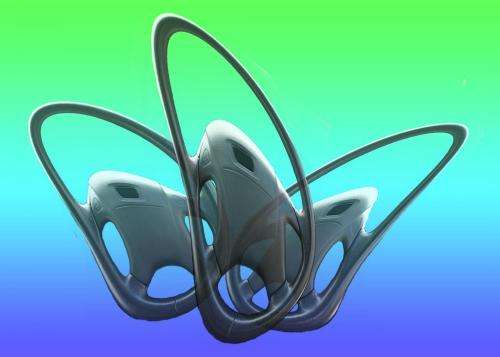Correlations of quantum particles help in distinguishing physical processes

Communication security and metrology could be enhanced through a study of the role of quantum correlations in the distinguishability of physical processes, by researchers at the Universities of Strathclyde and Waterloo.
The study involved analysing the impact of quantum steering - the way a measurement performed on a particle can affect another distant particle. The study authors devised a method for both precisely quantifying steering's impact and relating it to the task of distinguishing physical processes.
The research could have significant implications for quantum information processing.
The study was carried out by Dr Marco Piani, of Strathclyde's Department of Physics, and Professor John Watrous, of Waterloo's Institute for Quantum Computing (IQC) and School of Computer Science. Dr Piani was also at IQC at the time of the study.
Dr Piani said: "Quantum particles can be in a particular state known as `entangled'. Albert Einstein, with Boris Podolsky and Nathan Rosen, scrutinised quantum mechanics and, specifically, the entanglement of quantum particles. Faced with the perspective of the steering effect, they argued that quantum mechanics was still an incomplete theory, since it predicted what Einstein considered a 'spooky action at a distance' - indeed, two particles can be at opposite ends of a galaxy and still be entangled.
"We now know that steering is a crucial and real quantum effect; however, knowledge about what steering is actually useful for has remained limited. In our research, we related steering to the discrimination of physical processes, which seeks to answer questions about what happens in time to physical systems of interest, like microscopic particles. We were able to prove that the steering effect is the key to providing a specific advantage in this type of task.
"Our results, including the tools we introduced to quantify steering, could be applied to fields such as quantum cryptography, where secret keys are created between two parties so they can submit and encrypt messages to communicate privately - as it happens, for example, in online banking. Our results could also be useful in quantum metrology and in other areas of quantum information processing".
Dr Watrous said: "Steering is an interesting phenomenon in quantum physics. Our work ties this concept in a new way to a specific information-theoretic task in which it functions as an essential resource. It is a hypothetical task that you won't find on your to-do list, but it is both natural and intuitive, and the connection offers a new insight into the nature of steering."
More information: The research has been published in the journal Physical Review Letters (DOI: dx.doi.org/10.1103/PhysRevLett.114.060404 ) and was presented by Dr Piani at the 18th Conference on Quantum Information Processing, held in Sydney on 12-16 January.
Journal information: Physical Review Letters
Provided by University of Strathclyde, Glasgow


















